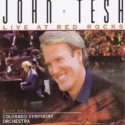The brain loves to find and follow patterns. One activity forms a roadmap for creativity.

The scene:
A wannabee writer strives to be a published author.
They sit before a monitor — one of those ancient furniture-like monitors — of creamy, gray plastic.
The would-be author has an idea. A plot. A few characters. A setting.
The concept: a woman in mid-life (40-ish?) receives a call from her estranged adult daughter. She lets her machine take the call. The voice says, ‘Mom, I wish I could tell you this in person, but it took some time to work up the nerve. Mom, I met someone. He’s a real family guy. We eloped. Mom, if it’s all right, we’d like to come to Massachusetts for Thanksgiving.’
The story concept rattled around their mind for days, months, and years. No, maybe one year.
They want to write. They do write… sometimes. But then the phone rings, the kids cry. They must go to work. Time’s up.
Of course, you probably guessed the wannabee writer is me.
I wrote the story- eventually.
- The story became a 140,000-word novel.
- Some days, the words flowed easily.
- Some days, I teased the words out of my mind and onto the screen.
- Some days, the screen remained blank. No new words appeared.
It’s been 27 years since I started to write that first book, and one constant has remained in my writing routine. Music!
Artists/makers/creatives benefit from the sensory cues connected to their art-making.
Some light candles. Some use essential oils. Some brew tea or coffee.
Scents provide potent connections to memories.
To this day, whenever I smell chrysanthemums, I am transported back to 1977 and my father’s funeral. At the time, I hardly knew what a chrysanthemum smelled like. Different than a rose. Different than a lilac. I don’t have to describe the elements of a smell to benefit from the sensory prompt.
But we cannot always have those scents with us.
Music provides a sensory cue to switch on the ‘creating mind.’
My go-to writing music is John Tesh’s 1995 album Live at Red Rocks.
The first track begins with applause. And then, a sort of a fanfare of trumpets.
If you’re not familiar with Tesh, you might compare his style to Yanni. Still, Tesh’s style seems just a bit more reserved, constrained, and polished than the shaggy-haired, mustachioed Yanni.
New Age? Maybe? Popularist? Definitely.
I don’t often share this particular choice of music and album with others.
Am I embarrassed? Maybe?
The instantaneous shift music prompts the brain remains undeniable.
Like flipping on a light switch, my writing music immediately sheds a positive light on my literal keyboard.
Yes, the music’s tone uplifts with power, and maybe the primary reason I chose this album two and a half decades ago.
As the songs go along, I don’t even notice the music any longer.
The subconscious mind is well aware of each song.
Nonetheless, it allows (permits? prompts? promotes?) the conscious mind to create characters, craft plots, design scenes, and negotiate themes.
The subconscious mind steps out of the way as it sits in the background lounging on its familiar couch, maybe nodding off now and then. It waits patiently for this writer to put in her time.
If you have difficulty getting started in your art, find your music.
You do you. You know what will work for you.
- Put together a playlist that fills the time that you have allotted for creativity.
- Play it in the same order.
- Your brain will become familiar with the patterns.
- You’ll instinctively know to get down to business.
- You’ll know when to ramp up.
You’ll know when you’re halfway through the playlist, when you’re halfway through, when you’re approaching the end, and when to wrap it up.
If you’re like me, there will be days when you’re dying to just get through your writing session. And if you’re like me, there will also be days when you barely notice the closing chords as your playlist comes to a close.
The algorithm offers up another selection, something in the same vein with similar tones, rhythm, and instrumentation.
Do you have a go-to album? Or playlist? Have you noticed the mental shift that the familiar sounds prompt?
Please leave a comment and I’ll sample it on Spotify. I’m always eager to expand my online music collection.
p.s. When I was working on my dissertation, I used a different kind of music — television soundtracks from Superhero shows like Arrow, The Flash, and Supergirl. I named my Spotify playlist ‘Blake Besties’ for its composer Blake Neely. I love that music for its heroic themes. I absorb the power and the confidence from those superhero characters willingly running into danger to vanquish the villain and save the day.
Find more creativity tips and strategies at www.doyourart.org
Powerful Trick to Flip the Switch and Turn On Your Creativity was originally published in The Writing Cooperative on Medium, where people are continuing the conversation by highlighting and responding to this story.
Go to Source
Author: B. Morey Stockwell, PhD
